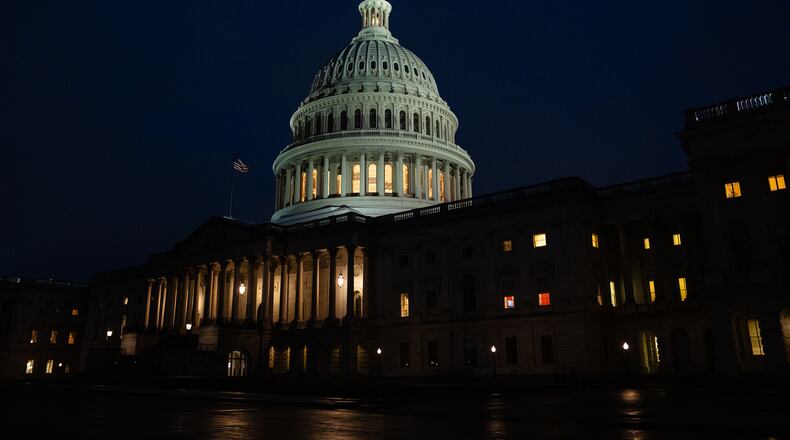If approved by a simple majority of voters, Issue 1 would amend the Ohio Constitution to replace the current politician-led redistricting process with a citizen commission. Both current rules and Issue 1 require that maps be drawn with produce districts with partisan leans proportional to historic voting patterns.
In other words, if Ohioans vote for a party’s statewide candidates 60% of the time, then that party should be favored in about 60% of the state’s legislative and congressional districts; Issue 1 would update the map drawing rules to make that proportionality standard easier to hit.
If Issue 1 passes and can produce a map that adheres to proportionality, it could immediately benefit Ohio Democrats in Congress as soon as the 2026 election.
Of the state’s current 15 representatives in the U.S. House, 10 are Republicans and five are Democrats for about a 67% to 33% split.
If Issue 1 used recent voting patterns, it would require that 55.1% of Ohio’s congressional districts lean Republican. This gives Democrats a chance to flip two congressional seats.
Republicans currently control the U.S. House of Representatives with 220 seats, compared to 212 for Democrats. So flipping four seats across the country is all it would take to tilt that balance of power.
Out-of-state spending
The congressional stakes have helped attract millions in out-of-state spending to the campaigns advocating for and opposing Issue 1.
Citizens Not Politicians, the group that wrote the amendment, petitioned it onto the ballot and now campaigns in its favor, has drawn in $39.6 million since the start of the year. This includes Ohio donations summing to $7.1 million, and out-of-state contributors to the tune of $32.6 million, or more than 82% of its total contributions.
Its biggest contributors have been liberal dark money groups, including $10.5 million from Article IV in Virginia and $6.7 million from the Sixteen Thirty fund in Washington, D.C.
Ohio Works, the official opposition campaign, has been out-raised with only $5.6 million in contributions since the start of the year.
The opposition campaign was less reliant on out-of-state donations but garnered only $2.7 million from Ohio-based contributors. The other $2.9 million came from out-of-state donors, making up about 51.5% of the campaign’s total contributions.
Ohio Works’ top contributions are $1.8 million from Washington D.C.’s American Jobs & Growth PAC and $1 million from a Columbus-based group called Ohioans for a Healthy Economy.
Turner, Cox react
The implications of Issue 1 are front-of-mind for Ohio’s congressional delegation and their opponents on the November ballot.
U.S. Rep. Mike Turner, R-Dayton, stumped in opposition to Issue 1 before a Dayton Area Chamber of Commerce crowd this week.
Turner said that maps created under Issue 1 might separate Dayton and Wright-Patterson Air Force base into different congressional districts, thus hampering local and federal advocacy partnerships. He also warned that Issue 1 could produce meandering districts that extend from Dayton to Democratic strongholds like Cincinnati, or Columbus in order to create the requisite number Democratic districts under Issue 1.
“If this passes, Dayton, Ohio, could lose having a member of Congress. Your member of Congress could live in Columbus or Cincinnati or Lima, Ohio, and they’re certainly not going to represent Wright-Patterson Air Force Base like the legacy of members who have been here in the Dayton community,” Turner said.
Turner’s Democratic challenger in November is Amy Cox, who hopes to flip the district in November and supports Issue 1 and its potential to help Democrats wrest control of the U.S. House.
“If we picked up two of those seats, it would look more balanced like the state,” said Cox.
For more stories like this, sign up for our Ohio Politics newsletter. It’s free, curated, and delivered straight to your inbox every Thursday evening.
Avery Kreemer can be reached at 614-981-1422, on X, via email, or you can drop him a comment/tip with the survey below.
About the Author

